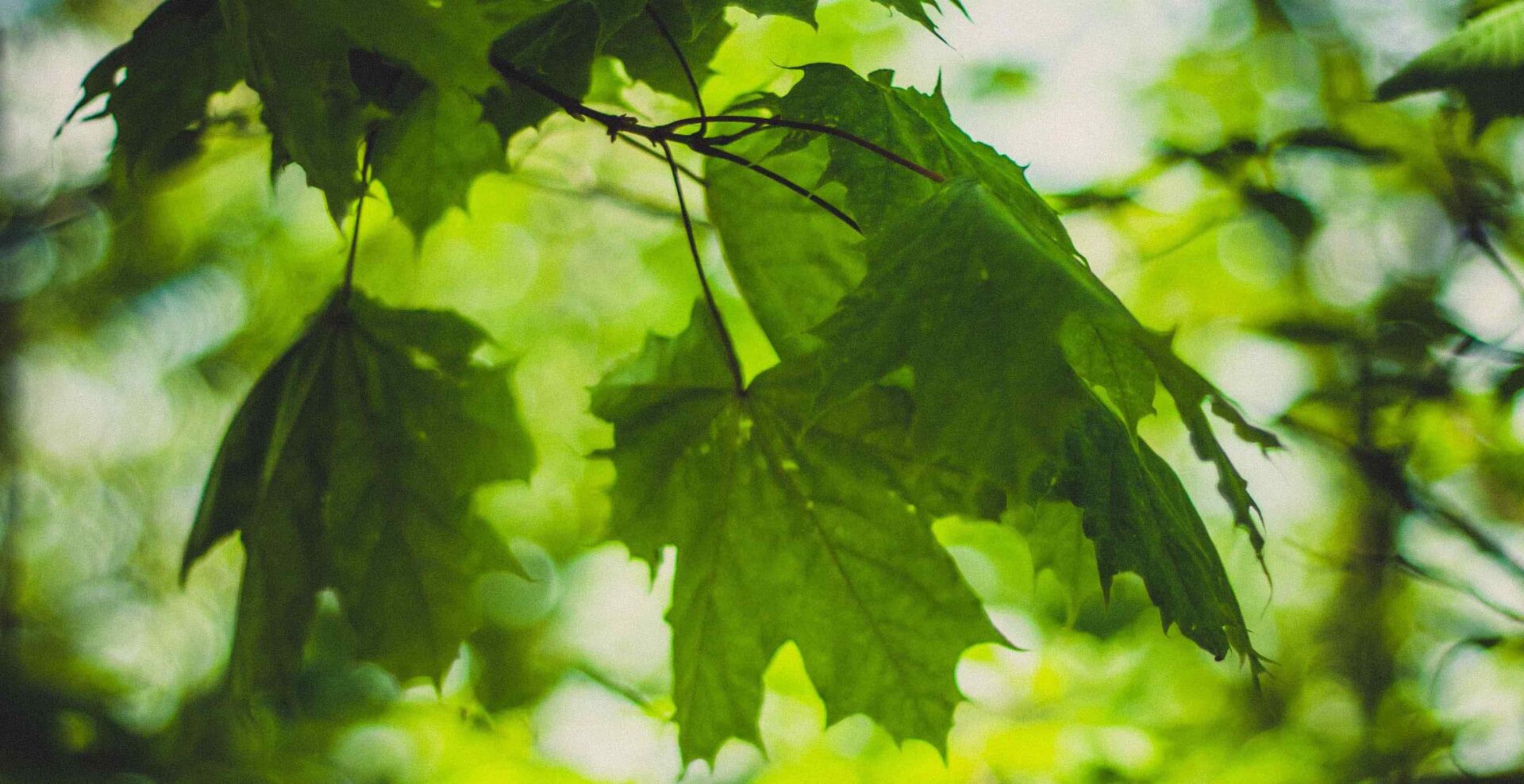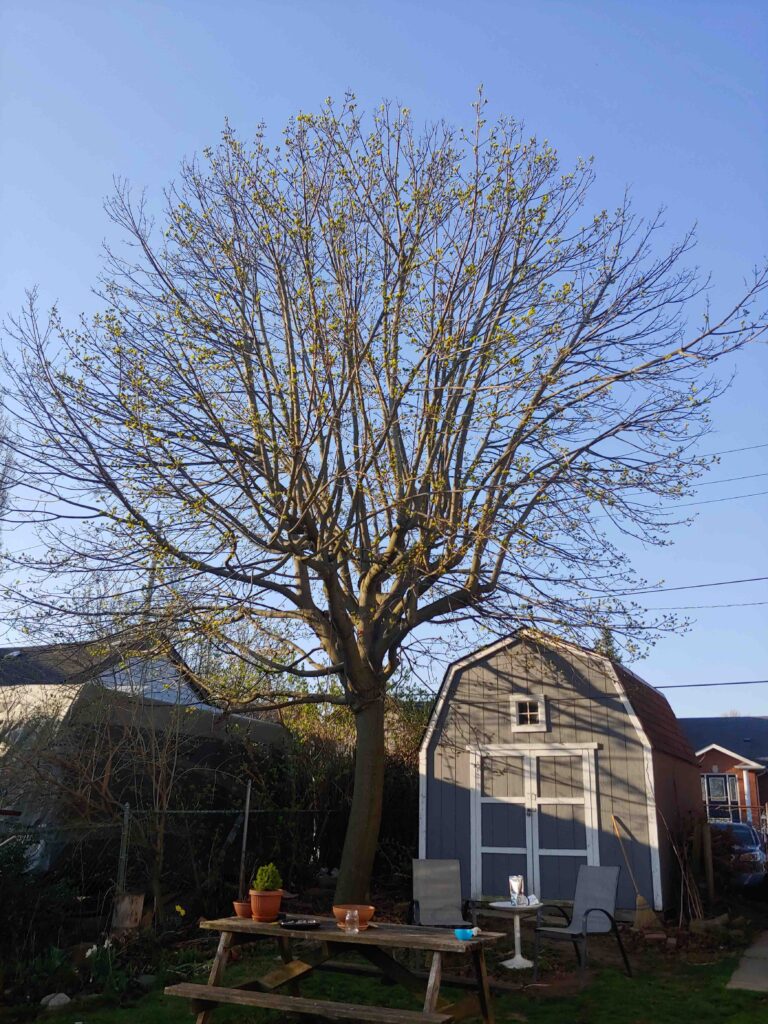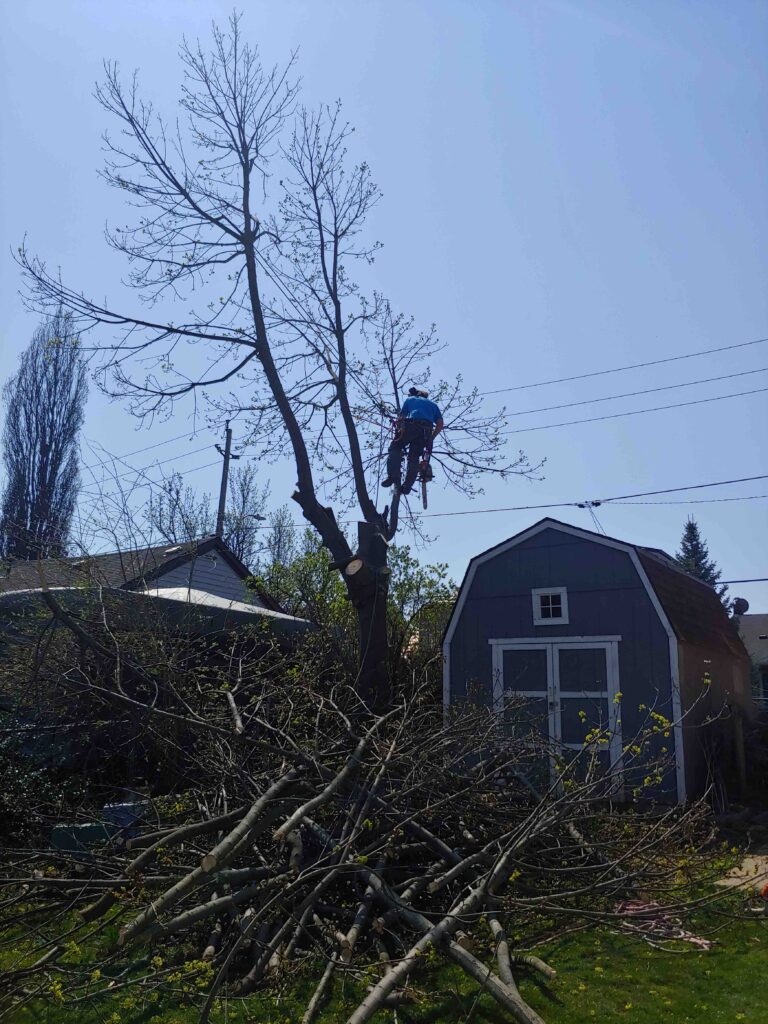What to consider when choosing a tree

Our beloved Norway maple, which provided hours of shade in the backyard, had to come down. That has led to a search for a native species that will provide food for birds and insects, grow quickly, withstand our hot summers and be resistant to pollution. Read on for our choice ...
Last spring, the huge Norway maple in our backyard clearly wasn’t doing well. A number of limbs hadn’t leafed out and were obviously dead. I called a friend who is an arborist to come by and let me know what he thought the problem was. To my surprise, he walked into the yard and in under 10 seconds looked at the tree, and the nylon rope girdling the tree left by the previous owners and announced, “It’s collared. It’s basically dead.”
Our efforts to dig the nylon rope out from under the bark were unsuccessful. It had constricted the tree as it grew, cutting off the cambium layer just under the bark that carries nutrients from the soil to the branches. We started preparing for it to come down.
The maple, invasive and undesirable though the species is, was the cornerstone of our backyard living area. In the summer we spend so much time in the garden I often joke that we only come indoors to sleep and use the washroom. The shade of the maple is what made that possible on the hottest days.
But now it’s gone. We left a 2.5-metre tall peg (like a really tall stump) because a significant amount of the benefit trees give to an ecosystem happens after they have died, and slowly return to the soil. We are sincerely hoping a family of woodpeckers moves in and that slowly rotting roots feed and nourish our soil.
The question remains though: What to plant in its place? I would be lying if I said we hadn’t been agonizing about the decision for close to a year.

The tree needed to be a native species above all else. If you love birds, then you must plant native trees and shrubs. These are the plants that support the insect larvae (caterpillars and grubs) that birds need to feed their young. All the bird feeders in the world are useless to them when they are raising babies who can’t eat seed. They need soft bugs, and lots of them. One British study found that a pair of chickadees need 6,000 to 9,000 caterpillars to fledge just one baby from egg to independence.
Native trees and shrubs are the best sources of that high-protein food.
It also had to be fast-growing though, because we didn’t want to wait forever to have something to sit under, and we didn’t want to remortgage the house for a huge tree that already had a canopy.
Tulip poplars were an early contender. They grow fast, are native, and have the most amazing flowers in May. The canopy though can be quite sparse as they get older, and doesn’t provide the dense shade of some other deciduous trees.
We also flirted with getting a sugar maple. I love the idea of tapping a tree for my own syrup – I even did it with my Norway maple and got about an ounce of syrup out of the effort. But are heat-sensitive trees like sugar maples a good long-term investment? Some studies suggest that in another 15-20 years, Hamilton’s relentlessly hot summers will be unable to support sugar maples as their prime habitat slowly shifts northward.
We would, of course, love a white oak. Anyone who has even cracked open a Doug Tallamy book knows these are the top species for native insect life, supporting upwards of 400 different species of caterpillars. Although not all at once. That would be gross.
Unfortunately, white oaks are extremely sensitive to environmental contaminants. Our part of our neighbourhood has some of the worst air quality in Hamilton as it’s less than 800 metres from the 403 and the constant car exhaust. There was no way the tree would thrive.

Instead, we’ve settled on a red oak. They grow quickly at first – up to 60 cm a year for the first 10 years, and can withstand not only our terrible pollution, but also our difficult clay soil. They provide habitat for a huge range of insects, if not as many as their white oak cousins. And they are beautiful and have great fall colour.
There are so many different considerations to weigh when making this kind of choice. Lesia Mokrycke, who is going through our city documenting our oldest and biggest trees as part of her Monument Trees project, likes to say that trees are the oldest living thing in our cities. Planting them should be done with an eye to the future. In the case of oaks, which can live hundreds of years, sometimes a long way into the future.
When legendary botanist and ecologist Diana Beresford Kroeger was on my show in mid-April, she talked about her solution to the climate crisis: Everyone, even those of us who live in cities, needs to plant one tree a year for the next six years. She’s run the math and calculated that with the amount of carbon trees absorb, that would get us down to the range of 350 parts per million of carbon in the atmosphere (vs. the 412 or so we are currently at), which would buy us some time to decarbonize our economy.
This means that by planting a native tree in your backyard, you may not be just providing shade and a nice area to sit under, or providing food for hungry baby birds, you may just be helping to save the planet.
Happy planting!
Jason Allen is the host of The Environmental Urbanist, Tuesdays at 1:00 pm on 93.3 CFMU, and has been encouraging Hamiltonians to explore the outdoors for almost two decades.






